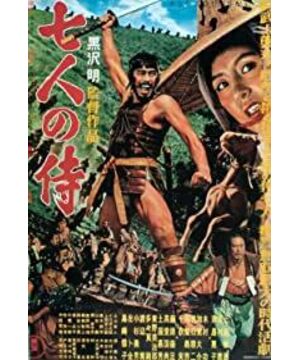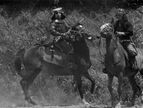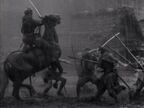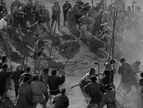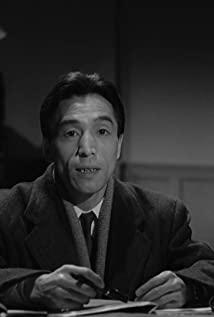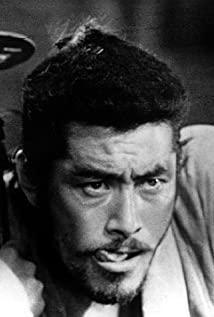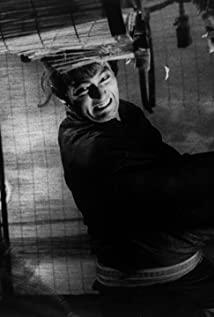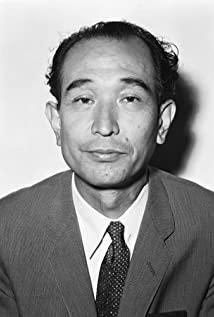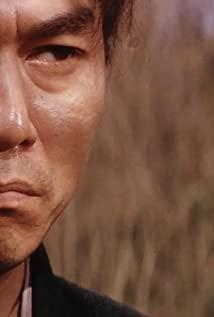Text / Li Xiaofei Note 1: Originally published in "Film World" magazine and Popular Network Note 2 Thanks to the Falcon Kazama For Chinese martial arts movie fans, samurai movies are not a very watchable genre, but there are many worthy Chinese Movies to learn something. In Japanese samurai movies, there are no heroes in white clothes fluttering and spotless, and there are few martial arts that fly over the eaves and walk the walls, and most of them are real in reality. In samurai films, before becoming a samurai or a hero, he is first of all a person. Before fighting for justice, they must first work hard for their lives: Zatoichi is a masseuse, worshiping a knife and renting out children and martial arts, Qingbingwei dusk Going home to make a bird cage, he didn't dare to propose to his sweetheart until he had a chance to raise his salary. Jinyun Banshiro watched the whole family die because of poverty. Ru Er Dongsheng ridiculed the shortcomings of martial arts films, which do not exist in Japanese samurai films. Most Chinese martial arts films use fables to connect with reality, while samurai films are mostly realism. Although their protagonists have strong force, they are mostly ordinary people's living conditions. In recent years, the development trend of Chinese martial arts kung fu films is to restore heroes and martial artists to real people and let them live in the real world, such as "Ip Man", "Seven Swords", etc. These are the norm in Japanese samurai films. There may be many people who don't like samurai movies because of historical and cultural reasons, but we can at least see part of the reason why the Japanese nation has achieved a series of successes in modern times. The seven samurai (1954) still #09 1. Seven Samurai 1954 Director: Akira Kurosawa Score: 10 Akira Kurosawa, who worshipped Shakespeare and Tolstoy, reached the height of his predecessors in this film, like Hamlet, and has tragic value beyond the times. The film made several samurai who lost their existence to fight a meaningless battle. Four of them died in the battle, and three of them continued to walk on an endless road. Xiaoli said that this is about the end of an era, the tragedy of a group of stubborn people who sacrificed their lives for their ideals. The most wonderful metaphor in the film, the musket, actually symbolizes a cruel and irresistible fate. At the same time, it also symbolizes the demise of a kind of justice, nobility and heroism of the classical era. Seven samurai with different personalities. When Gorobei and Kanbei first met, they said, "I know the suffering of farmers, but the reason I accept it is that your personality attracts me. Perhaps the deepest friendship in life , it often arises by chance." Akira Kurosawa mourns an era where you can be willing to go to death for a friend you have met for the first time. In the end, Jiuzang, who had perfected his swordsmanship, was killed by a musket in the heavy rain. Katsushiro cried in the rain. Speaking of which, this is a metaphor for life, what is the meaning of life? The universe is nothing but an accidental existence, what is the meaning of human beings who are as small as insects and ants? But knowing this, it is different whether it is to be in a daze, to numb yourself in a timely manner, or to fight up and find the value of survival in this boring void. And "Seven Samurai" represents the latter, which is why the "failure" at the end of the film feels tragic rather than sad. Dai-bosatsu tôge (1966) Still Photo #04 2. Great Bosatsu Ridge 1966 Director: Kihachi Okamoto Score: 9. 7 If "Seven Samurai" is the pinnacle of "decent" samurai films, then "Da Bodhisattva Mountain" is a representative work of "evil school" samurai films. The screenwriter Hashimoto Shinobu, the author of "Seven Samurai" and "Rashomon", and Tatsuya Nakadai, who played the role of Ryunosuke, also made the performance of this film one of his representative works. The Sword Demon Ryunosuke he created is like selling his soul to the devil, with double flashes of magic and genius. This character has such a contradictory temperament. On the one hand, he is evil to the end, he mercilessly kills the old man who prayed to the Buddha for his contempt, and he takes the chastity of his opponent's wife before a duel, but he breaks his promise during the competition. Killed the opponent with a wooden sword, but because of its paranoid evil, it gave birth to a sense of simplicity to the extreme tragedy. This devil, determined to fight against the world with his own genius, is gradually heading towards the end of his madness. In the film, Toshiro Mifune plays Shimada Toranosuke, the master of kendo. On the way to avenge Ryunosuke, the student he directed rejected his friend's suggestion to use a musket, but at this time Ryunosuke had been betrayed by the Shinsengumi, and he encountered the Great Bodhisattva Ridge. The granddaughter of the old man who was killed made him suddenly so mad that he couldn't see anything. At this time, the fire ignited, and dozens of swordsmen besieged him. On the stage with surreal meaning, the sword demon who finally defeated the fear was staged. his death dance. Seppuku (1962) Poster (Italy) #02 3. Seppuku 1962 Director: Masaki Kobayashi Score: 9.6 Masaki Kobayashi's film is unique in form, similar to Rashomon's, with several people telling a complete story, Reflects on Bushido's rightful place to place dignity over life. What the audience sees at first is the story of a rogue samurai who cheats under the guise of cutting his belly, and at the end it is a family tragedy. Tatsuya Nakadai plays the most profound tragic character in Japanese samurai films. His behavior after losing his entire family, after performing this character's despair, he has nothing to worry about, abandoning his life and dying to question the entire system and culture. The cruel hypocrisy, after the Jingyi family finally transferred the musket team, Jin Yun did not want to die under the gun, and cut his abdomen to death before the musket team opened fire. Jin Yun's death was not revenge, but to fight against the injustice of the whole world. He exposed the hypocrisy of Bushido's so-called dignity over life, which actually belonged to director Masaki Kobayashi. Although the proposition is huge, Kobayashi Masaki's perspective belongs to the individual. He often leads the audience to experience a tragic story as an individual, which makes his films full of emotional power. Death Sword Rebellion: Receive the wife (1967) Still photo #01 4. The Sword of Death 1967 Director: Masaki Kobayashi Score: 9.6 Masaki Kobayashi's samurai films pay more attention to the existence and emotions of individuals. Although they are samurai films, they always criticize the anti-Bushido The part of human nature and the darkness of the system, he also sacrificed his life for the ideal in his films, but this ideal is not some kind of empty idea, and the ignorance and loyalty emphasized by Bushido is even more disgusting in this film. Jinyun Banshiro in "Cut the Belly" was saddened by the tragic death of his son-in-law and daughter, and went to commit suicide alone to take revenge, while in "The Sword of Death", what he defended with death was love and personal dignity. Toshiro Mifune, a samurai who entered the family of the family, endured humiliation and burdens all his life, but was moved by his son's love in the end. In order to protect his son, wife and dignity, he fought against the system alone, and finally died under the musket. This movie shows us that the Japanese tradition is to honor those who strive for the right goals and ultimately fail. On the contrary, those who achieve success by unscrupulous means are despicable (such as the despicable Li Yuanhao's contemptuous ridicule of the rebels in "Dunhuang" by Japanese director Yasun Sato in China: "It will not be you who can make a name in history." ). If a nation only regards success and victory as the only criterion of value, the nation is degenerate and hopeless. 5. Ronin Street 1990 Kazuo Kuroki Rating: 9.5 The theme of this film is similar to "Seven Samurai". It can also be said to tell the story of the samurai ronin who lost their goals and survival value, and finally regained the dignity of life in battle. However, the expression of "Seven Samurai" is metaphysical and more symbolic, while "Ronin Street" is more emotional and closer to the perspective of ordinary people. Compared with Kurosawa's Seven Samurai, it is like Dostoyer. Fsky to Tolstoy. This film is a remake of the classic of Makino Shosan. The background is the end of the curtain. The protagonists of the film are four rogue ronin. The ronin street where they are located, the prostitutes are constantly being killed by the superior samurai who despise them. When the last one is killed by the ronin After the admiring prostitute A Xin assassinated the samurai but failed and was tied in the woods, the four finally awakened the dignity and blood in their hearts and fought desperately towards the woods, where more than 100 senior samurai were waiting for them. The final Hundred People Slashing Battle was so heart-warming, especially the Iga sword technique of the mother clothes. Every time a knife was used to kill a person, the knife would be returned to the sheath, and the next time the knife was used, blood would be splattered for five steps. Tsubaki sanjûrô (1962) Still #05 6. The Sword Through the Heart 1962 Director: Akira Kurosawa Score: 9. 5. Akira Kurosawa's model of entertainment samurai films is not as heavy and sad as "Seven Samurai", but it can be said to be one of the most exciting and enjoyable films in Japanese samurai films. The success of the film is that Toshiro Mifune created the image of a warrior who is cold on the outside and hot on the inside, but he is brave on the outside, but in fact has both wisdom and courage. The wandering warrior accidentally saw a group of young and upright warriors will be surrounded and wiped out while resting in the ruined temple. to rescue them. At the request of the samurai, he, who goes by the pseudonym Tsubaki Sanjiro, helped them. In the case of these young people's repeated bad things, Bang Sanjirou finally managed to be clever, and finally defeated the corrupt family elders. The whole story of ups and downs in the front seems to be to set off the last scene that Akira Kurosawa is going to shoot: the master bodyguard of the old family, Muroto played by Tatsuya Nakadai catches up with Tsubaki Sanjiro and demands a duel with him. The two faced each other for a minute, and suddenly drew their swords, and between the lightning and flint, Muroto spurted blood for five seconds, and fell to the ground and died. This momentary duel has been continuously replayed in slow motion by fans to study its beauty over the years. After killing his opponent, Tsubaki Sanjiro sighed and said, "He, like me, is a sword without a sheath, and a good sword should not be without a sheath. You should all put the sword in its sheath." twilight samurai (2002) still #15 7. Twilight Kiyobei 2002 Director: Yoji Yamada Score: 9. 4 Yoji Yamada, whose works are well known to Chinese audiences, has a simple film technique, real characters, simple stories, and moving emotions, all of which make his samurai trilogy in his later years the most emotional samurai film after Masaki Kobayashi. . "Twilight Kiyobei" makes the genre of samurai films once again attract the world's attention. The Twilight Kiyoei created by Hiroyuki Sanada has become an unforgettable movie image. On the eve of the duel, Kiyobei, who was worn down by his poor life, swung his sword again in order to regain his speed. During the duel, Sanada Hiroyuki used a wooden stick to face the real sword, and used a long shot to show the reality of the duel. The so-called "one inch is short and one inch is dangerous" in martial arts is wonderful. In the end, Yuwu Shanemon, who was the opponent of Qingbingwei, made a deep impression like a glimpse, although it was only the last appearance. He had already seen that the situation was about to change, and that the era of samurai was over. Qiu Qinghei let himself go, hoping to temporarily avoid waiting for the world to change. But when he mistakenly thought that Qingbingwei was going to use a wooden sword to deal with him, he duel with Qingbingwei because of his self-esteem. As a result, the long sword hit the beam in the room and he was beheaded. This most sober person still can't get rid of the fate of his samurai status. The Shogunate: Shôgun iemitsu no ranshin - gekitotsu (1989) Still photo #06 8. The Shogun 1989 Director: Yasuno Foki Score: 9. 4 A film that has a lot to do with Chinese audiences. First of all, his martial arts style is half-Hong Kong and half-day. It can be called a Sino-Japanese martial arts exchange meeting. There are both sharp and concise Japanese-style sword fights represented by Danbo Tetsuro and Ogataquan. Hit kills, and there are also Hong Kong-style martial arts films that are imaginative and tricky, and some scenes are even quite "undefeated in the East". In the film, it can be seen that martial artists from China are used, and many of the tricks are definitely not Japanese. The life-defying spirit of many stuntmen in the film is also amazing in Hong Kong films, and the most eye-catching is the one famous in Japan for "Shaolin Temple". Hu Jianqiang, he performed a series of kung fu such as drunken fist, drunk stick, flying and grasping three-section stick in the film, and his beautiful and fancy kung fu and the martial arts style of the whole film actually complement each other (but due to the language barrier, he can only play dumb). Moreover, this film has been dubbed into China and has a sufficient audience. This film is a Jin Yong-style historical romance film. It tells the story of General Tokugawa Iemitsu's intention to get rid of his eldest son, who he disliked, and many noblemen headed by the Ministry of Punishment rebelled against the general and escorted the young master to Edo. Under the pursuit, most of them sacrificed heroically. The entire process of the battle royale was filmed magnificently and excitingly. King's Gold Goyokin (1969) Still Photo #05 9. King's Gold 1969 Director: Five Heroes Rating: 9.3 The classic samurai films starring Tatsuya Nakadai, especially the martial arts scenes, are very interesting, such as the Wakiro played by Tatsuya Nakadai Bansun Bingwei, when he was besieged for the first time, he responded with a peculiar swordsmanship. When facing the enemy, he held the sword hilt with both hands for defense, the forehand sword was far away, and the backhand sword was close, showing swordsmanship Master's temperament. In the end, he had a duel in the snow with a sword. Before the duel, the drums of the Japanese folk assembly set off the atmosphere of the mountains and the wind. Sun Bingwei kept breathing in his hands in order to prevent his sword-holding hand from freezing in the snow. , and with a knife, he directly brought a torch to the duel - these are details that are impossible to appear in Chinese martial arts films. In the end, Sun Bingwei inserted the knife into the snow, and when the opponent attacked, he violently counterattacked and hit the opponent. This is the same as the wave-breaking knife sent by the water gulls who worshiped a knife. The snow covered the trajectory of the knife, and the battle between the masters is only a matter of victory or defeat. Just a moment. Stranger: No Emperor Blade Tan Sutorejia: mukô hadan (2007) Stills #02 10. Alien: No Emperor Blade Tan 2007 Director: Ando Masahiro Score: 9. 3 This film represents the highest level of action design in Japanese animation samurai movies. Compared with the real and direct pursuit of martial arts in Japanese live-action movies, one-shot kills, the action design of this film is extremely gorgeous, and it is also comparable to the first-class Hong Kong martial arts films. Not inferior. The film tells the story of the masters of the Ming Dynasty who went to Japan to find the blood of a special child to make the elixir of life for the emperor. The Ming Dynasty in the movie appeared in the image of the heavenly kingdom, and several Ming masters had different weapons and martial arts. , each with a shocking performance. In the end, the two masters from China and Japan faced off. On the surface, they seemed to be Japanese martial arts, but the two masters were actually "foreigners" from the West. The last fight was epic, with gorgeous and passionate music. , which is mind blowing. The emotional expression between the protagonist and the child is also very touching. Kill 4: Snow Hate Hissatsu 4: urami harashimasu (1987) DVD Cover #01 11. Kill 4 1987 Director: Fukasaku Xinji Score: 9.2 Although Sanada Hiroyuki stays in the Chinese audience's impression mostly as "Captain Sanada" In terms of image, but in fact, Sanada Hiroyuki can be said to inherit the mantle of the actors of the generation of Toshiro Mifune, Tatsuya Nakadai, and Shintaro Katsu, and one of the actors born in the 1960s in Japan with the most martial arts foundation. In "Twilight Qingbingwei", he performed a small sword in a long shot, and in "Death 4", he is less than 30 years old. The action of playing the sword can be said to be like drinking fine wine. "In Japanese films that do not rely on montages to create wonderful martial arts effects, Hiroyuki Sanada performed gorgeous and deadly effects purely with his personal watch, which is amazing. At the end of the film, he was shot to death by a musket, which is probably the same kind of martial arts. unmatched. Fukasaku Shinji's film has as many characters as his gangster films, but the images are full. Several bounty killers finally died for loyalty. The film also absorbed a lot of the music and form of spaghetti westerns. Sashimi Wolf 3: Going Through the Gates of Hell Alone 2 This series of films has created an unforgettable image of the executioner bowing down to a knife. This executioner, who is a professional murderer, built a Buddhist temple to save the souls who died under his knife. In the end, he was framed and could only take the orphan on a dangerous escape route. He asked the indifferent child to choose between a ball and a samurai sword. If he chose the ball, he would kill it, and be a child. After choosing the katana sword, he exuded uncontrollable joy. The story of this film is very interesting, and the martial arts are also quite exciting. From the beginning of Bai Yidao's escape, the water gull sent the wave-breaking knife to kill the opponent with one blow, and at the end, when fighting with the gangsters, the wooden stick of the cart was removed. , Combining a long-handled "saber-cutting knife", the long knife chops up more than a dozen gangsters with a sword like chopping melons and vegetables. It is a rare and hearty martial arts in Japanese movies. 13. Genroku Chuanzozo 1941 Director: Kenji Mizoguchi Score: 9.2 The Tadachinzo story is the most widely circulated samurai story in Japan, and it is also the story that best represents the "beauty of Bushido" in the eyes of the Japanese. There are many movie versions of this theme, among which is considered to be the best Mizoguchi version, which is longer than "Seven Samurai", almost four hours long to tell the ins and outs of this revenge story, but there are very few action scenes. The scene of the forty-seven soldiers besieging Kira House, the biggest selling point, was actually explained in the way the First Lord's wife read a letter. Different from Kurosawa Akira's Western-style drama conflict, Mizoguchi's work is full of features of oriental aesthetics. The picture is often opened from left to right like a scroll, and the close-up of the characters never appears. It is an extremely elegant and calm group portrait work. 14. Akho City Extinction 1978 Director: Fukasaku Shinji Score: 9.2 It is also a story of loyal ministers, the second edition of Fukasaku Shin and Mizoguchi go to two extremes. The bloody battle of the soldiers to besiege Kirafu, and the impassioned speech delivered by Oishi after the last forty-seven people cut their abdomens, was incensed to the extreme. Of course, it can also be said another way: the film is full of fascist-style violent aesthetics. 15. The Great Killing Array 1964 Director: Kudo Eiichi Score: 9. 1 The killing formation in this movie does not have beautiful movements or elaborate moves. Some are just beast-like fights. The fights of hundreds of people in dozens of minutes. Although they all use katana swords, they seem to be in groups. The beast, biting with its teeth and claws, especially the long-term use of handheld photography to film the final carnage, gives the audience an immersive sense of reality. The story line of "The Great Killing Array" is complex, political persecution and anti-persecution in troubled times, there are many characters, but they are very successful in shaping. 16. Cicada Shiyu 2005 Director: Black Earth Three Men Score: 9.1 A rather embarrassing love movie of the samurai era, his father was ordered to cut his abdomen, and Wen Shiro, who grew up as an orphan, only had childhood sweethearts to take care of him since he was a child. He was taken away by his parents when he was young. When he grew up, Bunshiro became a samurai, and Xiaofu became the lord's side chamber. When Xiaofu is involved in the whirlpool of political struggle, Wen Shiro must save his lover. The martial arts of this film are very interesting for the performance of "restraining the demons". Bushiro and his friends moved a dozen knives to the ground when facing the enemy. They learned from the deeds of a generation of swordsmen general Yoshikari Ashikaga. The backhand knife that changes hands behind the eyes and hits the opponent with a single blow is a magic stroke in samurai movies. 17. The Legend of Yoshihito Mibu 2003 Director: Yojiro Takita Score: 9.1 Based on the famous Saito Ichiro of the Shinsengumi at the end of the Tokugawa period, tells the story of the little-known swordsman Kiichiro Yoshimura, a man who endured humiliation for his family and dressed as a clown , when the Shinsengumi was defeated, but for the sake of responsibility and honor, he rushed to the musket formation of the Emperor's army alone. Yoshimura's personal tragedy also represents the Japanese's sympathy and commemoration of the Shinsengumi who "moved against the trend of history", and it is also a tragic song of the times witnessed by a small person. 18. Human Slash 1969 Director: Five Heroes Rating: 9.1 Katsu Shintaro showed superb acting skills in this film, surpassing Tatsuya Nakadai, who played a real character, because he killed so many people that he was even known as the "executioner". The process from Okada Izo's accomplice to enlightenment is very layered and tragic. The legendary writer Yukio Mishima plays the role of cold outside and hot inside, the cool downtrodden killer Tanaka Shinbei. When he was finally wronged, he suddenly made a beautiful cut of the abdomen. This unexpected action seems to be Mishima a year later. A preview of the ending, in 1970, he led a mutiny and delivered a speech to the Self-Defense Forces, "The Japanese are rich, but spiritually empty, you know?" After being laughed at by the Self-Defense Forces, he committed suicide. Samurai can't live without madness. 19. Zatoichi Story 1962 Director: Kenji Misumi Score: 9.1 In Japan, Zatoichi is a household name, similar to China's Huang Feihong, while Katsu Shintaro is Guan Dexing and Jet Li who are inseparable from Zatoichi. He modeled simplicity, humility, and wit, but who could fight for justice, fight for the weak, and even sacrifice himself. Among the realistic Japanese samurai films, the Zatoichi series is undoubtedly an extremely exaggerated and surreal movie, but just as many Hong Kong filmmakers commented on Wong Fei-hung, it can also be said that the Zatoichi represents an immortal spirit. And all of this started from "Zatoichi Monogatari". Shurayukihime (1973) Still photo #08 20. Shurayukihime 1973 Director: Toshiba Fujita Score: 9.0 A rare freehand film in Japanese samurai films, the whole film is more like a martial arts fable. This cruel revenge story tells about a woman whose whole family was murdered and sentenced to life imprisonment. After she had no hope of revenge, she seduced a man in prison to give birth to a daughter to avenge herself and her husband. The girl she gave birth was Shura Xueji. The role played by Lucy Liu in "Kill Bill" is actually her. In the movie, she fights with Uma Thurman's katana in the snow, which is also a reproduction of the scene and music of Shura Xueji's final ending. The story of the movie takes place after the Meiji Restoration, and the martial arts romance is extremely comic-like. 21. The conspiracy of the Yanagyu family 1978 Director: Fukasaku Xinji Score: 8.9 Fukasaku Xinji is an epic samurai film with the background of the shogunate coup, telling a series of bloody killings caused by Tokugawa Iemitsu's succession to the throne. The atmosphere of Fukatsuki's second shot is brutal and exciting, and the action is intense and exciting. In particular, the two sides of the wrestling use various political means to drive the lower-level samurai to shed their blood and sacrifice their lives. It can be said that it is the ancient costume version of "Battle of No Kindness and Righteousness". Fukasaku Shinji is indeed a master at describing characters and politics. 22. Revenge 1964 Director: Masa Imai Rating: 8.9 A very sophisticated revenge story with full of dramatic tension. The ending of "Twilight Qingbingwei" may have come from Ben. In the end, the big BOSS played by Takuro Tanba had already beaten Shinpachi all over the place to find his teeth. As a result, the last knife accidentally hit Songzhi, and the opponent turned defeat into victory. The last big killing battle is a bit like the end of Kobayashi Masaki's "Belly Cut", with one enemy, and finally a tragic death. Yojinbo with Heart (1961) Still #03 23. With Heart 1961 Director: Akira Kurosawa Score: 8. 9 The original version of Eastwood's "Red Dead Redemption", Akira Kurosawa was originally a fan of John Ford, this film has a Western meaning, but in the end it was transfused to the Western again, which can be said to be a good story. Toshiro Mifune plays a knight who does not play cards according to common sense. He encounters two gangsters fighting in a small town, and the people suffer. Mifune shows his martial arts skills, which makes both sides compete to hire him. In the end, both sides are eliminated under his strategy. A Part of the Samurai Love and honor (2006) Still #20 24. A Part of the Samurai 2006 Director: Yoji Yamada Rating: 8.9 The most emotionally charged part of Yoji Yamada's trilogy, probably because the protagonist is pushed to the most extreme Tragic desperation: Blind because of tasting food for the master, and his wife was seduced by the villain. Under this situation where it was impossible to resist, the protagonist Mimura Shinnosuke decided to learn the blind sword for revenge. In the case of his swordsmanship teacher disapproved, he finally practiced the blind sword, and finally cut off his enemy in a duel. The blind sword here is not as exaggerated as "Zatoichi", but very real, so it is thrilling. Ghost dog: the way of the samurai (1999) still #02 25. Ghost Dog Killer 1999 Director: Jim Jarmusch Rating: 8.8 This killer film by Jim Jarmusch, whose protagonist It is an old black who believes in Bushido, and this strange setting finally creates an indescribable sense of tragedy. This Leon-like killer was willing to die at the hands of a master who was not worthy of allegiance because of the Bushido spirit he believed in, while his companions were happy to rap on the streets. The little girl who likes to read Rashomon and Bushido books represents the inheritance of ghost dogs. The film does not praise this culture, but only symbolically expresses the sad songs of some rebels who move against the trend in the materialistic world. 26. The Thirteen Assassins 1963 Director: Eiichi Kudo Score: 8.8 The original version of Takashi Miike's remake, one of the earliest depictions of heroes in Japanese samurai films. The story is the same as the Sanchi version, but the martial arts pursue realism, and there are only fifty-three lord guards against the Thirteen Assassins. In order to enhance the realism of the mixed battle scene, the final decisive battle was shot with a large number of portable cameras as in "The Great Killing Array". 27. Hidden Sword and Ghost Claw 2004 Director: Yoji Yamada Score: 8. 8 In the samurai trilogy of Yamada Yoji, the description of swordsmanship is more mysterious. It is also the era of Westernization of Japan at the end of the Tokugawa period and the decline of samurai. In the end, the BOSS was first cut by Zongzang, and then his arm was broken by a musket. This film also has the emotional story of ordinary people. The film's performance of the two skills of "hidden sword" and "ghost claw" is very interesting. In the end, the protagonist Zongzang is a woman who was deceived by the lord. Slash the lord to death. 28. Demon World Reincarnation 1981 Director: Fukasaku Xinji Score: 8.8 Adapted from Yamada Fuutaro's work, the historical background is the suppression of Amakusa Shiro Tokisada (yes, the big BOSS of "True Samurai Soul") during the Tokugawa Iemitsu period. The uprising of Christian believers tells the story of the reincarnation of Amakusa after the death and led Miyamoto Musashi and other swordsmen to return, trying to overthrow the Tokugawa shogunate, but they were defeated by Yagyu Jubei (another Samurai Soul character). It is not as gorgeous as the later remake version, but it is biased towards the one-hit kill of traditional Japanese sword fighting. The coquettish female ghost played by Kana Akiko in the film is also impressive. 29. Assassination 1964 Director: Shinoda Masahiro Score: 8.8 The samurai story with the background of the assassination at the end of the curtain tells the idealist who is paranoid and obsessed with ideals. The film has a complex structure and many characters. It shows the same historical event as "Servant" and other films, but the method is completely different, and it is more popular. 30. Miyamoto Musashi Trilogy 1954 Director: Inagaki Hiroshi Score: 8.8 Inagaki Hiroshi's trilogy was shot in the right way and elegant, just like the admonition given to him by Miyamoto's monk teacher in the film: "Having both civil and military, Fang is the right way" (this One point is also the difference between Japanese samurai culture and Chinese culture. Chinese literati and samurai are separate, while Japan inherits the characteristics of China before the Han Dynasty. Civil and military are not separated, and Miyamoto Musashi is the representative). The story of the film is also quite attractive. The first episode set off the upright Musashi with the fall of Musashi's friend Yaba, and the third episode of the decisive battle on Yanliu Island produced a rather dreamy effect. 31. Zatoichi: Battle of the Fire Temple 1970 Director: Kenji Misumi Score: 8. 8 "Zatoichi" is one of the most interesting movies, which fully expresses the charm of the blind swordsman Zatoichi. The movie is also full of humorous and warm details, such as the pair of husband-and-wife shopkeepers that Zatoichi met on the road. In this episode, the enemy of Zatoichi is actually a blind gang boss, and the scene where the boss surrounds Zatoichi in the heart of the lake has twists and turns, which is thrilling. Interestingly, this episode also arranged a love scene for the blind swordsman, although the blind swordsman's final choice is like Chaplin's tramp. 32. Miyamoto Musashi 1961 Director: Uchida Tumeng 1961 Score: 8.8 Uchida Tumeng's five Miyamoto Musashi series filmed in the 1960s, adapted from the Japanese "national writer" Yoshikawa Hidehiro's long masterpiece. Expressing the experience of Miyamoto Musashi's painstaking training to become a generation of swordsmen, Musashi, played by Nakamura Kinosuke, gives the film great charm. 33. The Three Horsemen 1964 Director: Heroes of the Five Shepherds Rating: 8.7 The original version of Zhang Che's remake of the movie "Three Heroes in Border Town". Three Samurai, Chai, the Greatest of Heroes. Such as Tsubaki Sanjiro. Sakura, a hilarious character, an optimist, everything is casual, such as Heihachi in "Seven Samurai". Kikyo is the most special character. He is cynical and mocks Chai's ideal, "You think you can change the world", but his heart is full of justice, but the world is disappointed. In the end, he is moved by Chai and joins the farmers. The last three people walked on the road, covered by the long yellow sand, "Three samurai walking on the road". And the road has no end. Samurai Rhapsody SF: episode one (1998) Poster #01 34. Samurai Rhapsody 1998 Director: Hiroyuki Nakano Rating: 8.7 A very postmodern samurai film, the music is rock music, the camera movement and the actors' performances are like cartoons. The silhouette sword fighting scene against the red background in "Kill Bill" is COPY from the beginning of the film. The three protagonists of the film, one is an aristocratic idiot master, the other is a arrogant inferior samurai, and the other is a comedic and humble master of swordsmanship. After the whole spoof, the protagonist realizes the truth of "abandoning selfishness and bigotry, people can approach God and get love". 35. Tang Xia Zuo Shan: Fei Yan Ju He Zhan 1966 Director: Hero of Five Clubs Rating: 8.7 Tang Xia Zuo Shan is a classic character in the Japanese samurai film as famous as Zatoichi, one-eyed and one-armed, both righteous and evil, I don’t know if it has been filmed How many versions, in which Nakamura Kinosuke starred and the film directed by the hero of the five societies is one of the masterpieces worth watching. Several action scenes are simple and beautiful. 36. Servant 1965 Director: Kihachi Okamoto Score: 8.7 In the story of Oedipus in the Japanese samurai film, Toshiro Mifune played the ronin at the end of the curtain, an illegitimate child who did not know who his biological father was, and was killed in the end by participating in the assassination in order to stand out and pursue love. The man finally revealed that it was his father. The film had a Greek tragic flavor. The protagonist behaved like Oedipus, breaking through many obstacles and heading for the final tragic ending. In the final heavy snow, a scene was performed. Terrible tragedy of murder. 37. Heroes of Warring States 1958 Director: Akira Kurosawa Rating: 8.7 Akira Kurosawa's entertainment film of the Warring States Samurai, the plot design is humorous and tense, Toshiro Mifune plays the wise and courageous general of Qiuyueguo in the film, but the most famous image of the film is still tall and thin A comedic image of two chunky peasants who later became C3PO and R2D2 in Lucas' "Star Wars" series. 38. Miyamoto Musashi 1944 Director: Mizoguchi Kenji Score: 8.7 Mizoguchi Kenji's "Miyamoto Musashi" is the earliest version of this character's classic, still has Mizoguchi-style oriental aesthetics, and you can see a lot of worthwhile in the film. The small details are commendable, such as Musashi cutting a wooden oar on the boat before the duel on Iwaryu Island. After cutting, he wiped the blade with his sleeve before returning the knife to the sheath. 39. Zatoichi 2003 Director: Takeshi Kitano Score: 8.7 Takeshi Kitano, who is a master of both boxing and swordsmanship (knows boxing and kendo), shot the postmodern version of Zatoichi, Bei's humor runs through, and carries forward the CG plasma technique. Severed limbs were filled with blood. Takeshi Kitano likened his role to "U.S. troops in Iraq" -- to stop the chaos, but to bring more chaos. However, in terms of roles, the difference between Takeshi Kitano's Zatoichi and Katsu Shintaro's Zatoichi is still obvious. 40. Treading the Tiger Tail 1952 Director: Akira Kurosawa Rating: 8.7 Akira Kurosawa's entertainment samurai film, telling the story of a vassal of a fallen lord during the Warring States Period who dressed up as a monk to escort the lord out of the customs. There are no fighting scenes in the film, but the script is written It is very solid, and the several scenes of fighting wits and courage with Ichiro Sugai, who plays the level officer, really make the audience feel like stepping on a tiger's tail. Ichimatsu Hara-Kiri: death of a samurai (2011) Still #15 41. Ichimatsu 2011 Director: Takashi Miike Score: 8. 7 Takashi Miike remakes Kobayashi Masaki's classic "Cut the Belly". Compared with the original, the new version is far from comparable to the old version in terms of sensationalism, and scenes that incite tears continue to appear (such as finding out from the corpse of a begging woman). A snack he smuggled back), but the martial arts and the final outcome are not as good as the original. Jin Yun used the bamboo sword used by his son-in-law to cut his abdomen and many masters desperately. Although the idea is cool, it seems too childish in the realistic samurai film. Still photo of Taboo (1999) #01 42. Director of Imperial Law 1999: Nagisa Oshima Rating: 8.6 Nagisa Oshima's gay samurai classic, it is worth mentioning the sword fight scenes in the film, especially the games in the gym, which are really exciting , Very interesting, Kitano Takeshi who starred in the film also performed a very chic swordsmanship. 43. Sword of the Beast 1965 Hero of the Five Society Rating: 8.6 The title of the film is very desperate, referring to people turning into beasts. The protagonist's sentence "This is a slaughterhouse!" is a metaphor for this cruel world. But man did not become a beast in the end, he started to be a cynical villain, but finally regained his sense of justice and rescued the man who was chasing him. This film actually tells about the oppression of the individual by the system and the resistance of the latter. Beautiful and smooth in scheduling, it is a masterpiece of black and white samurai movies. Beast soldier Ninja scroll (1993) dvd cover (France) 44. Beast guard Ninja 1993 Director: Kawajiri Yoshiaki 1993 Score: 8.5 "The Matrix" animation version, the most gorgeous style, the most aggressive action One is "Program," and the reason why the Wachowskis approached Kawajiri Yoshiaki to shoot this short film is precisely because they are fans of the film. "Beast Warrior Ninja Post" is a completely surreal animated samurai film, which is different from the realism of "The Alien". Thirteen assassins (2010) Still photo #05 45. Thirteen assassins 2010 Director: Takashi Miike Score: 8. 5 Takashi Miike, who was once known for his bloody perversion, has become more and more righteous and awe-inspiring in recent years. "Thirteen Assassins" tells the story of the thirteen warriors who fought bloody battles with a demon lord and finally perished together. Half of the film was fighting. , Sanchi-style monsters also appeared just right, such as the woman whose limbs were incomplete and her tongue was cut off, which made the "all executions" that she wrote with her mouth to be taken out by the leader of the righteous as an order. passionate. 46. The Story of Sasuke Sarutobi 1965 Director: Masahiro Shinoda Score: 8.4 A Japanese spy and suspense film in the early 17th century, which tells the story of the legendary ninja Sasuke Sarutobi. The film is very good at using light and shadow, lenses, etc. to create a killing array Atmosphere, with fiction and reality, Miyamoto Musashi's two swordsmanship style has been shown many times in the film, but unfortunately the design of the killing array is relatively general, Shiyuan Shintaro, a right-wing writer and politician well-known to the Chinese people, played the role of fog hidden in the film. Finale appearance 47. Uzumaki Monogatari 1953 Director: Kenji Mizoguchi Score: 8.4 An anti-Bushido comedy about a Don Quixote-style Japanese farmer who wants to become a samurai, and finally cheats to achieve his goal, but ends up being his wife The ions dissipated, and finally woke up. This film has the anti-war sentiment under the supervision of the US military after the war, and it seems that it can also be regarded as a fable of the ultimate victim of Japan's military use. The Last Samurai (2003) Still Photo #18 48. The Last Samurai 2003 Director: Edward Zwick Score: 8.3 As a Hari family, Tomko, as a tribute to "Seven Samurai" and other films, is based on Takamori Saigo The deeds of etc. are based on the story of a Western military officer who lost his faith and was mercenary, and found the belief in Bushido during the Japanese civil war. Compared with the samurai films shot in Japan, this film with a large investment is particularly sophisticated. Tom's skill is worthy of admiration, although he was almost beheaded by a samurai sword due to a mistake during the filming. Girl Killer Azumi (2003) Still Photo #08 49. Girl Killer Azumi 2003 Director: Ryuhei Kitamura Rating: 8.1 Today's Japanese samurai films have lost their own characteristics in martial arts, and instead learn the surreal gorgeousness of Hong Kong-made films , the results are nondescript, and the logic of the film is the same as "Hero", that is, using today's crimes and madness in exchange for the imagined peace and righteousness tomorrow, but its demonic atmosphere is still worth watching. 50. Demon World Reincarnation 2003 Hirayama Yukihide Score: 8. 0 There are many absurd places, but the wonderful places are also wonderful. The martial arts are good, but the most profound thing is that the devil seduces the world with perfection, such as the gentleman who respects the Buddha, who kills the Buddha and kills his relatives in order to bring the spear skill to the perfect state. , I am willing to go to hell." This is the real artist's mind, such as "Black Swan", in order to achieve the highest level of art, he does not hesitate to enter the devil's way for ideals. There is also a martial artist who has served the powerful all his life, and awakened his dream of becoming the first swordsman before his death. In fact, they are all very profound.
View more about Seven Samurai reviews


